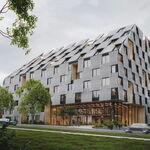Jeff Morgan
Active Member
I'm sure many have already seen this but I'm putting it here for documentation purposes. What is happening in another city ->
This is after they buried it in a very, very expensive tunnel. Not sure if it's the best example.I'm sure many have already seen this but I'm putting it here for documentation purposes. What is happening in another city ->
This is after they buried it in a very, very expensive tunnel.
While Toronto is still worshipping the automobile, other cities around the world are banning them.
If I lived close to work in a town of 300k I would probably bike too. A bit more difficult when you are 10km+ from the work place.

Work starts on the rehab of the Gardiner between Jarvis and Cherry Sts with closure of the WB offramp to York/Bay/Yonge for reconstruction starting tonight: https://www.cp24.com/news/it-will-n...-off-ramp-from-wb-gardiner-to-close-1.4508183
First part of the $2.3B work to rehab the existing highway. Closures of other ramps will follow later before this contract is completed in 2021.
If I lived close to work in a town of 300k I would probably bike too. A bit more difficult when you are 10km+ from the work place.
Sure, Sydney has an extensive and growing tunnelled expressway system which is more often than not a delight to use. But Sydney tolls these roads, and that would be unacceptable in Toronto.Thought it might be interesting to note that Sydney opened the first phase of it's new underground M4 freeway this week.
The tunnel extends the M4 motorway 5.5km closer to downtown. It's the first of a 3 phase project that will create a new, almost entirely underground loop from the M4 to the M5 near the airport. This includes a new full free-flow interchange just north of the airport and several other complicated tunnel interchanges and access routes.
While the project won't run directly downtown, it will connect to the Western Distribution Freeway which is a downtown freeway that already exists and ends about 2km outside of downtown.

‘Congestion-busting at its best’
The first major stage of Sydney’s WestConnex project was officially opened to traffic at 2am this morning, more than three years after construction started on the $3.8 billion underground section.www.news.com.au
A map of the full project is available here:
While Toronto is still worshipping the automobile, other cities around the world are banning them.
Toronto 'worships' the automobile? Stop the over-the-top comments.
Toronto 'worships' the automobile? Stop the over-the-top comments.




